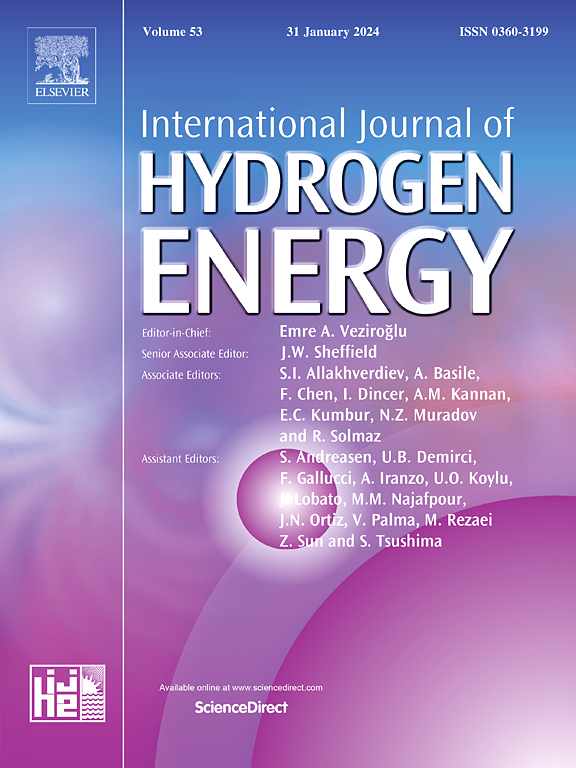Cobalt/cobalt phosphide/nitrogen-doped carbon derived from zeolitic imidazolate framework-11@zeolitic imidazolate framework-12 core-shell structure as efficient electrocatalyst for oxygen evolution reaction
IF 8.1
2区 工程技术
Q1 CHEMISTRY, PHYSICAL
引用次数: 0
Abstract
Electrochemical water splitting is considered as a promising and efficient way to produce hydrogen and oxygen, which are regarded as sustainable energy. Zeolitic imidazolate frameworks (ZIFs) have been widely utilized as sacrificial templates for synthesizing efficient electrochemical active materials with porous structure and tunable pore properties. In this study, cobalt/cobalt phosphide on N-doped carbon matrix (CPZ11@12–150) derived from the novel core-shell structure of ZIF-11@ZIF-12 is reported as a highly efficient electrocatalyst for oxygen evolution reaction (OER). With the enhanced electrical conductivity from N-doped carbon and excellent electrocatalytic activity from cobalt phosphide, the CPZ11@12–150 possesses a low overpotential (274 mV) at 10 mA cm−2 and a small Tafel slope of 76.2 mV·dec−1 in 1 M KOH. The CPZ11@12–150 also shows superior long-term stability for at least 100 h, owing to good attachment of CoP on N-doped carbon matrix and its mesoporous structure for effective releases of O2 bubbles.

求助全文
约1分钟内获得全文
求助全文
来源期刊

International Journal of Hydrogen Energy
工程技术-环境科学
CiteScore
13.50
自引率
25.00%
发文量
3502
审稿时长
60 days
期刊介绍:
The objective of the International Journal of Hydrogen Energy is to facilitate the exchange of new ideas, technological advancements, and research findings in the field of Hydrogen Energy among scientists and engineers worldwide. This journal showcases original research, both analytical and experimental, covering various aspects of Hydrogen Energy. These include production, storage, transmission, utilization, enabling technologies, environmental impact, economic considerations, and global perspectives on hydrogen and its carriers such as NH3, CH4, alcohols, etc.
The utilization aspect encompasses various methods such as thermochemical (combustion), photochemical, electrochemical (fuel cells), and nuclear conversion of hydrogen, hydrogen isotopes, and hydrogen carriers into thermal, mechanical, and electrical energies. The applications of these energies can be found in transportation (including aerospace), industrial, commercial, and residential sectors.
 求助内容:
求助内容: 应助结果提醒方式:
应助结果提醒方式:


